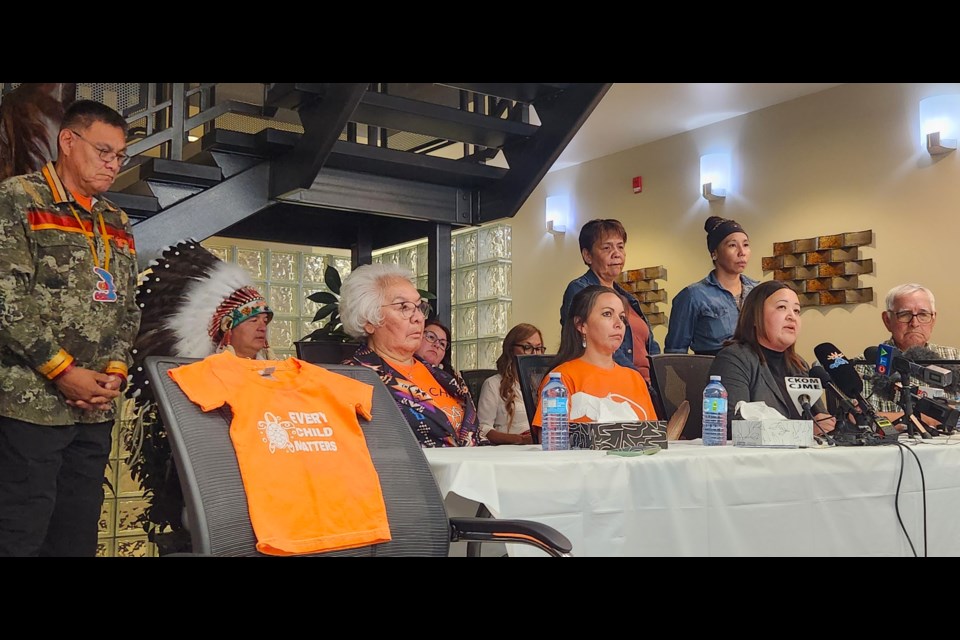SASKATOON — English River First Nation leaders will leave the 93 potential unmarked graves discovered at the former Beauval Indian Residential School untouched. They will use other means to learn the identities of those who may be buried there so families can pay their respects.
According to Dawn McIntyre, the ground penetrating radar co-ordinator, on behalf of the Beauval residential school survivors, their two-year GPR investigation showed 93 areas of interest within and around the school cemetery.
“At this point, we will try and rely on the records we have obtained and whatever [information] we can get if we can find as much information from the archives as possible. We would consider exhumation as a last resort,” said McIntyre.
“Throughout the history of the site, the residential school also housed the staff and workers. It was also a cemetery. Our search for the first phase was conducted in and around the cemetery.”
ERFN Vice Chief Jenny Wolverine, Meadow Lake Tribal Council Vice Chief Richard Durocher, MLTC Dene Vice Chief Lawrence McIntyre, Federations of Sovereign Indigenous Nations Chief Bobby Cameron, Métis Nation-Saskatchewan Vice President Michelle LeClair and Treaty Commissioner Mary Culbertson, Elders Norman Opekokew and Margaret Reynolds, and Council members Katrina Morris, Randy McIntyre and Sandra John in a media briefing held at the ERFN office.
McIntyre said several small unmarked graves within the cemetery had no crosses and headstones to identify who was buried and when the person died. The GPR detects changes in the soil and provides a three-dimensional image of what is underneath.
“The [GPR] gets the data and provides a 3D soil image. These are shapes that are the size of graves. The advantage here is 小蓝视频 in a cemetery with marked graves,” she said.
“They [the GPR team] were able to compare and find that these unmarked graves are consistent with the marked graves. So, they look the same. The measurements were identified as child size or the geoscientist’s technical term sub-adult in size.
The sizes of 79 out of the 93 unmarked graves were less than five feet and 14 were about two feet in length, possibly indicating as infants. The cemetery was used solely by the residential schools until the early 80s and became a community cemetery afterward.
Wolverine said she could not speak on behalf of the survivors of the Beauval residential school. She knows they are hurting and suffering as old wounds have been reopened with the recent discovery.
There are about 16 Indigenous communities — First Nations and Métis — within the Beauval area, which only has one road going in and outside the northern village near Lac Île-à-la-Crosse and the town that bears the same name.
“These are not the final numbers… We are saddened to learn of the additional findings and know our work is not over. Not at Beauval and not at any of the other residential school sites. We need to pool our resources, First Nations and Métis, to continue,” said Wolverine.
“Schools should come with playgrounds, not graveyards… Canada and Saskatchewan need to step up, acknowledge, and provide meaningful resources that meet survivors' physical, emotional, mental and spiritual needs and address the intergenerational impacts on families.



